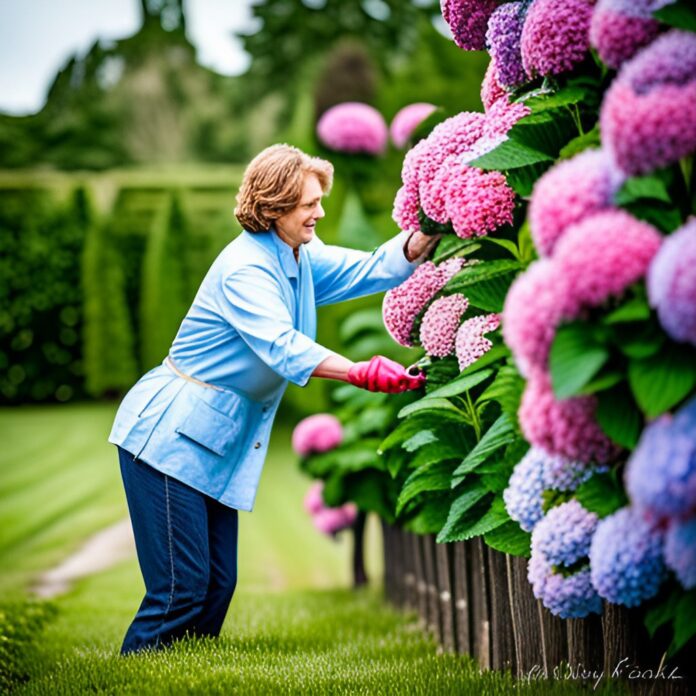For gardening enthusiasts, few plants evoke the romance of the summer garden like the hydrangea. Bursting with large, intricate blooms in varying shades of blue, pink, white, or even green, their ethereal presence can transform any outdoor space from mundane to magical. But to ensure your hydrangeas bloom to their fullest potential come summer, understanding how and when to prune them is crucial. This guide will walk you through the art of hydrangea pruning, demystifying the process for all those who have stared at these sprawling shrubs with a mix of awe and apprehension.
Pruning Hydrangeas with Headlining
Pruning your hydrangeas does not only encourage healthy growth and prolific blooming but also maintains the aesthetic appeal of your garden. The best time for pruning depends on the variety of your hydrangeas. For most, late winter or early spring, just as the plant is coming out of dormancy but before it begins active growth, is ideal. This timing allows you to see the dead wood that needs to be removed without sacrificing any of the upcoming blooms.

Start by identifying the spent flowers and old, dead wood. For mophead and lacecap varieties, which bloom on old wood, cut just above the first pair of healthy buds below the spent flowerhead. For hydrangeas that bloom on new wood, such as the panicle type, you can be more aggressive, cutting the plant back by about one-third its height.
Remember, the goal of pruning is not just to control size but to open the plant up to light and air, which reduces the risk of disease and encourages blooms throughout the plant, not just at the top. Use clean, sharp secateurs to make clean cuts, which will heal quicker than jagged ones and prevent diseases from entering the plant.
Headlining, or cutting back the plant to a set of strong, healthy buds, ensures your hydrangeas will grow back with a stronger, more beautiful structure each year. This technique, while it may seem drastic at first, leads to a fuller, more controlled growth and an abundance of blooms.
Understanding the Hydrangea’s Bloom Cycle
Before you pick up those pruning shears, it’s vital to grasp how hydrangeas bloom. Different species bloom on “old wood” (last season’s growth), “new wood” (new season’s growth), or a combination of both. Knowing the bloom cycle will guide you on when and how to clip.

Bigleaf Hydrangeas (Hydrangea macrophylla)
Known for their ability to change color based on soil acidity, bigleaf hydrangeas bloom on old wood. Prune these varieties right after their flowering season ends, usually late summer or early fall, to avoid cutting off next year’s blooms.
Smooth Hydrangeas (Hydrangea arborescens)
These North American natives bloom on new wood. For luscious summer flowers, prune them in late winter or early spring when the plant is dormant.
Panicle and Oakleaf Hydrangeas (Hydrangea paniculata and quercifolia)
Panicle and oakleaf varieties also bloom on new wood. Pruning is best done during late winter to early spring, just before new growth emerges.
The Right Time To Prune
Seasonally, hygrangeas have a sweet spot for pruning. This is to make sure you are not removing any future blooms or risking your plant’s health.
Bigleaf and Oakleaf Hydrangeas
Prune when the bloom starts to fade. For bigleaf varieties specifically, if they are not changing color (sign of alkaline soil), you can prune them within 2-3 weeks of flowering.
Panicle and Smooth Hydrangeas
Prune during the colder months, typically late fall to early spring. This is because they often bloom on the current season’s growth.
Equip Yourself With The Right Tools
The key to successful hydrangea pruning is sharp, clean tools. Lopper for thicker stems, shears for small, and gloves to protect your hands.
Loppers
For cutting stems up to 2 inches in diameter. Make sure the blade is sharp and the handle has a good grip.
Pruning Shears
Ideal for smaller growth, and for giving you more precision when working around the plant’s intricate structures.
Gloves
Protect your hands from scratches and pests, also giving you a better grip when working.
How To Prune Different Hydrangea Species
Each type of hydrangea requires a slightly different approach to pruning to ensure the best growth and flowering.
Bigleaf Hydrangeas
Simply removing the spent blooms with pruning shears is often enough. For more drastic pruning, cut back no more than a third of the oldest stems to the ground.
Panicle Hydrangeas
These can tolerate aggressive pruning. You may remove up to half of the plant if needed. Cut the oldest stems back to a few inches from the ground. Focus on thinning the interior, which encourages strong, new growth.
Smooth Hydrangeas
The simplest of the bunch to prune, simply shear back the entire plant to about 6-12 inches above the ground.
Oakleaf Hydrangeas
Avoid heavy pruning, but go ahead and remove spent blooms and dead wood. If necessary, cut back up to a third of the oldest stems to shape the shrub.
Error-Proof Pruning Tips
Mastering the art of hydrangea pruning takes time, but with these tips, you can avoid some common mistakes and ensure a healthy, vibrant plant.
Know Your Variety
Identifying the type of hydrangea you have is the first step. A ‘macrophylla’ tag, for instance, means it’s a bigleaf hydrangea.
Patience Is a Virtue
When in doubt, wait to prune. It’s always easier to take another snip than to regrow a lost bloom season.
The 1/3 Rule
Unless you know for sure your hydrangea blooms on new wood, never remove more than one-third of the plant each year.
Get the Timing Right
Pruning outside the recommended season can lead to loss of this season’s blooms or stunt new growth.
Troubleshooting Pruning Problems
Despite our best efforts, hiccups can occur in the pruning process. Here’s how to troubleshoot common issues.
No Flowers
If blooms do not appear, timing may be off. Consider your hydrangea variety and season when pruning. It could also be over-fertilization or too much shade.
Weak Growth
Misguided cuts or over-pruning can weaken a plant, reducing the number of stems that produce blooms. Be mindful of the 1/3 rule.
For more detailed insights into nurturing your hydrangeas and additional gardening tips, visit Essential Spring Cleaning for Homeowners – A Comprehensive Guide. This resource provides a wealth of information that can help you ensure the health and beauty of your garden, alongside expert advice on spring cleaning for homeowners aiming to enhance their living space both indoors and out.
Disease or Insects After Pruning
Pruning opens the plant to vulnerabilities. Keeping tools clean and properly disposing of clippings can help prevent the spread of diseases and infestations.
Best Practices Beyond Pruning
To complement your pruning regime, additional care practices will keep your hydrangeas in peak condition.
Soil Health
Amend soil to reach the preferred pH level for your hydrangea type. Use acidifiers to lower pH for blue blooms, or add lime for pink ones.
Fertilization
Limit fertilization, particularly of nitrogen. A soil test can help determine if and what nutrients your soil may lack.
Mulching
Apply a layer of mulch around the plant to retain moisture and regulate soil temperature.
Watering
Keep the soil well-drained but consistently moist. Overwatering is as harmful as letting the soil dry out.
Further Reading and Resources
For those looking to deepen their understanding of hydrangea care and pruning techniques, the following external resources can be invaluable:
- American Horticultural Society: Offers comprehensive guides on various plant care, including hydrangeas.
- Royal Horticultural Society: Provides detailed advice on gardening and plant care, with a section dedicated to hydrangeas.
- Gardeners’ World: Features tips from gardening experts, including how-to videos on hydrangea pruning.
- Hydrangeas Hydrangeas: A specialty site focused on hydrangea care, from planting to pruning.
- YouTube – How to Prune Hydrangeas: Contains a plethora of video tutorials that visually guide viewers through the pruning process for different hydrangea species.
Leveraging these resources can significantly enhance your gardening skills, specifically in caring for and maximizing the beauty of your hydrangeas.
Conclusion
While pruning hydrangeas can be a mix of myth and science, understanding your plant’s needs is the first step to mastering this essential gardening skill. By choosing the right season, type-specific approach, and additional care practices, you’ll be well on your way to a summer garden filled with the lush, delicate blooms that have made the hydrangea a beloved favorite of gardeners everywhere. Remember, each plant is as unique as its caretaker. Adapting these tips to your particular variety, local climate, and soil conditions will yield the best results. Happy gardening, and may your hydrangeas flourish under your green-thumbed care.


